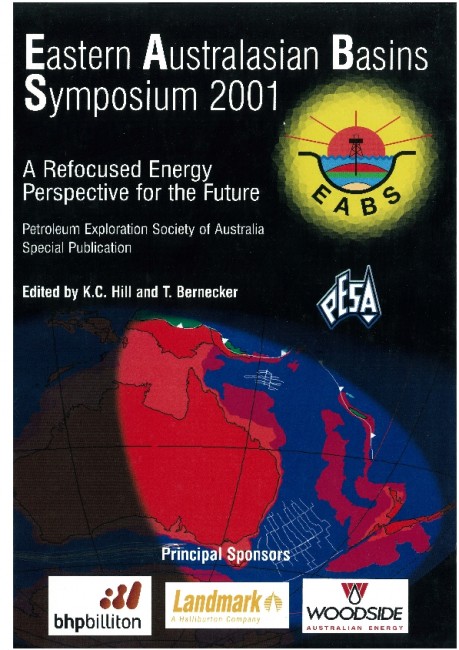Publication Name: Eastern Australian Basins Symposium 2001
Authors: P.J. Hill, A.M.G. Moore and N.F. Exon
Date Published: November 2001
Number of Pages: 35
Reference Type: Magazine Article
Abstract:
The South Tasman Rise (STR) and East Tasman Plateau (ETP) are large submerged continental blocks that abut southern Tasmania and cover an area of -230,000 km2 They are separated from Tasmania by 3,000 m deep saddles underlain by transitional crust, but elsewhere are surrounded by oceanic crust of Campanian to Paleogene age. Since 1994, the region has been the focus of a number of major geoscientific investigations including seismic surveys, seabed swath-mapping, geological sampling and deep-sea drilling. These have led to a greatly improved understanding of the geology and evolution of this remote region. Very little petroleum exploration has been undertaken by industry so far in this deep-water frontier area.The STR and ETP formed in the Late Cretaceous as this part of eastern Gondwana began to fragment, creating a number of microplates. The structural development of the region has been dominated by wrenching associated with the NW-SE Tasmanian-Antarctic Shear (active from early Late Cretaceous-Paleocene); Tasman Basin rifting and breakup (early-mid Late Cretaceous); Paleocene breakup at the southern margin of the STR; and Tertiary STR/Antarctica transform movement along the N-S Tasman Fracture Zone.
The STR comprises two main structural provinces:
l. a complexly-deformed western block with largely N-S/E-W trends (Early Tertiary N-S STR-Antarctica wrenching overprinting NW-SE wrenching along the Tasmanian-Antarctic Shear); and
2. a structurally-simpler eastern block cored by shallow basement beneath the crest of the STRand flanked by narrow NW-SE trending rift basins.
Sedimentary basins on and adjacent to the STR and ETP contain at least 4 km of section consisting of Late Cretaceous-Eocene siliciclastics, overlain by Oligocene and younger pelagic carbonates. The siliciclastics,
where drilled, comprise deltaic and shallow marine silty claystones, often rich in organic carbon. The western STR contains numerous small wrench basins comprising the Ninene Basin. Narrow NW-trending rift basins, with at least 3 km of section and 20 - 25 km wide, flank the central STR basement high. The margins of the oceanic L'Atalante Depression are underlain by more than 2 km of post-breakup sediments. On the ETP almost 2 km of post-breakup sediments overlie a probable volcaniclastic rift sequence of similar thickness.
Volcanic activity has been widespread and appears to be related to two main phases, Campanian (initial breakup) and Eocene (mantle plume/lithospheric tensile stress).


